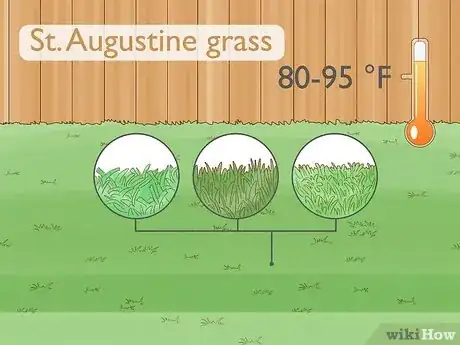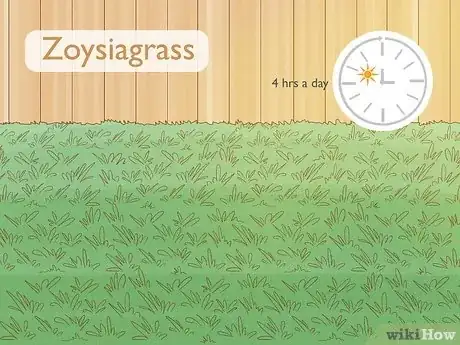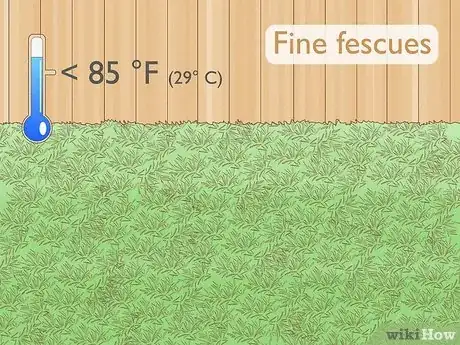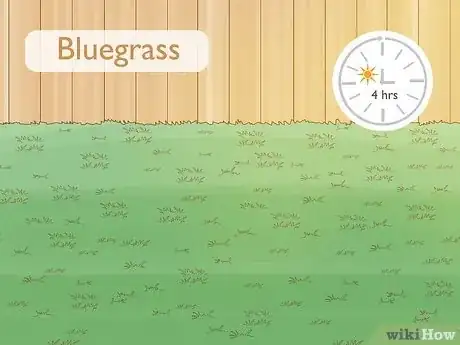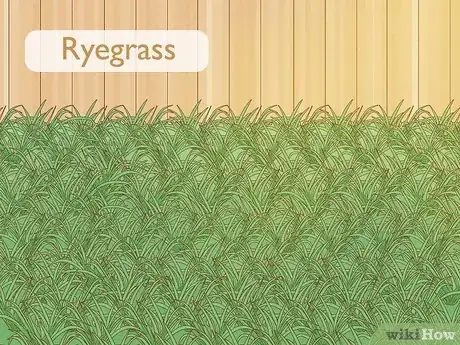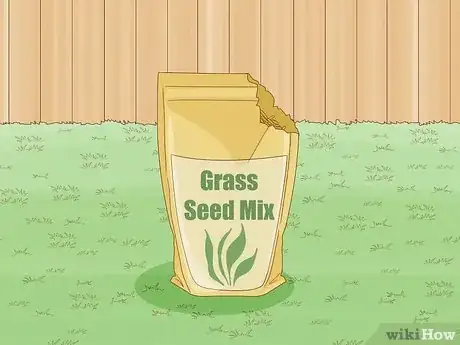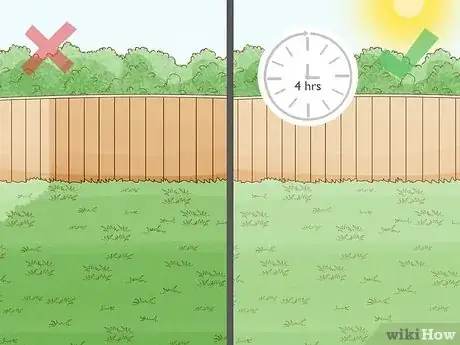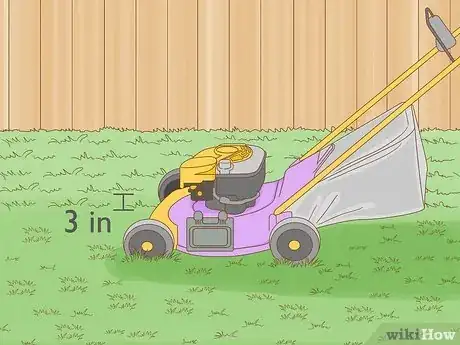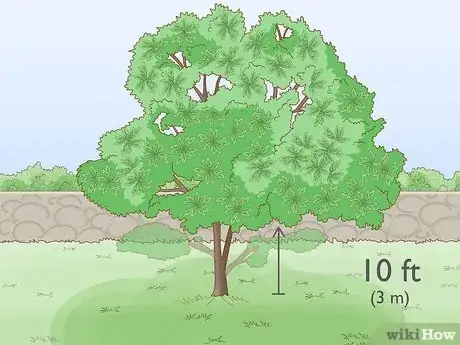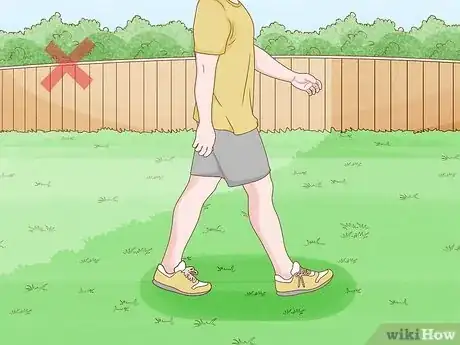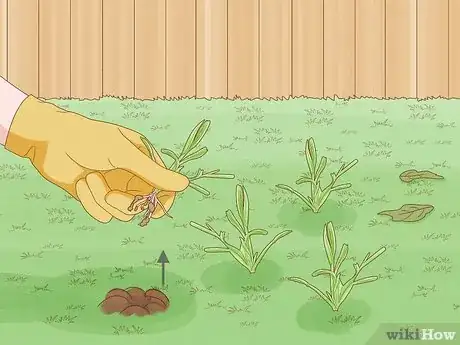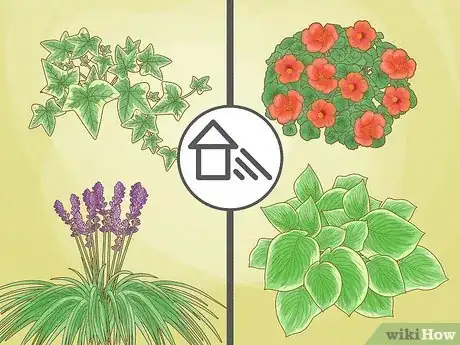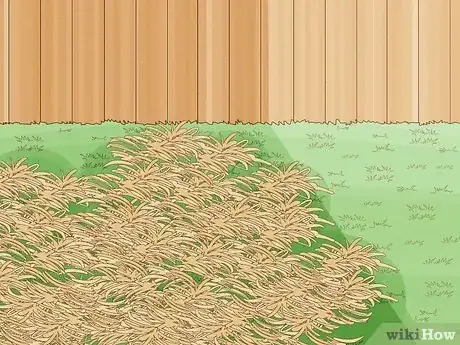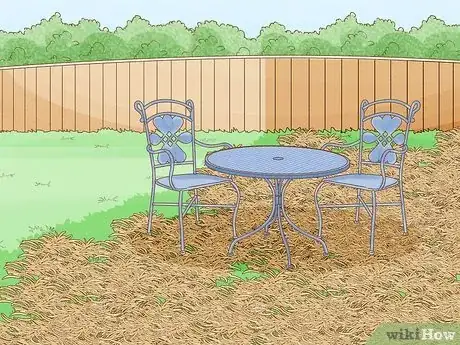This article was co-authored by Grant Wallace and by wikiHow staff writer, Devin McSween. Grant Wallace is a Landscaper and Owner of Grantlanta Lawn in Atlanta, Georgia. With over seven years of experience, he specializes in lawn maintenance and landscape installation. In 2012, he earned his BA from the University of West Georgia. Grant has been profiled in Shoutout Atlanta, Canvas Rebel, and Voyage ATL.
There are 14 references cited in this article, which can be found at the bottom of the page.
It’s a constant yard struggle: your grass seems to grow full and lush everywhere except the shady spots under your trees and around your house. If you’ve all but given up on having beautiful, vibrant grass all over your yard, we’ve got great news! There are actually quite a few grass varieties that can thrive in shade. In this article, we’ll tell you all about the different shade-tolerant grasses you can grow and what they need to thrive. We’ll also give you some alternative ideas to grass that can help you fill in the shady parts in your yard. Read on to get your lawn growing beautifully!
Things You Should Know
- In warm climates, plant St. Augustine grass and zoysiagrass. In cold regions, try fescues, bluegrass, or ryegrass.
- No grass is fully shade-tolerant, as most grasses need at least 4 hours of direct light to thrive.
- Help your grass grow by mowing your lawn 1 inch (2 cm) higher than normal, trimming low tree branches, and watering your lawn only when it’s dry.
Steps
Shade-Tolerant Grasses
-
1St. Augustine grass If you live in a warm climate, St. Augustine is the most shade-tolerant grass that you can plant. This grass still prefers a lot of light, but it can thrive with just 4 to 6 hours each day. You might plant this if you get partial shade from your house’s shadow.[1]
- If you live in a coastal area, shade-tolerant varieties like Raleigh, palmetto, and delmar are also tolerant to salt.
- St. Augustine grass grows best at 80 to 95° F (26-35° C). It’s very susceptible to freeze, so it won’t grow well in cooler climates.
- St. Augustine grass is considered a high-maintenance grass because it needs more fertilization than other grasses.
-
2Zoysiagrass This warm-season grass doesn’t tolerate heavy shade, but can withstand it if its moderate. Zoysiagrass is a good option for you if you have dappled shade from trees in your lawn, but not large areas of complete darkness. However, it still grows best when it receives about 4 hours of direct light each day.[2]Advertisement
-
3Fine fescues In cooler regions, fine fescues are your best bet for shady areas. These grasses thrive the best when they’re in partial or dappled shade, not total shade. If you’re not wanting to do anything more than mowing your lawn, this is a great, low-maintenance and drought-tolerant grass.[3]
- These grasses are better adapted to cool, dry areas. If your lawn gets poor drainage and the temperatures regularly exceed 85° F (29° C), it won’t grow well.[4]
-
4Bluegrass While the most popular bluegrass, Kentucky bluegrass, is mildly shade-tolerant, rough bluegrass is probably what you’re looking for. This cool-season grass thrives in cold, wet, and shady conditions, only needing about 4 hours of light to grow. This grass might be perfect for finally filling in that swampy, shaded area of your lawn.[5]
- Rough bluegrass grows quickly and is known to overtake other grasses. If this isn’t something that you want, limit your watering in the areas where the bluegrass is growing to discourage further growth.[6]
-
5Ryegrass Ryegrass is another cool-season grass variety that happily tolerates shade and wet conditions. Like bluegrass, it does well in partial shade, or about 4 hours of light each day. As long as your lawn temperature stays cool, ryegrass is an easy growing grass that will work in any area of your yard.[7]
- The two main varieties of ryegrass are annual and perennial ryegrass. Perennial ryegrass is usually the better choice, as it is more shade-tolerant, more resistant to disease, and has a darker, richer color.[8]
-
6Grass seed mix If you live in a cool climate, it might be best to plant a variety of shade-loving grasses. A seed mix allows one shade-tolerant variety to fill in spots that the other variety can’t. Varieties can also be mixed to help prevent diseases from developing.[9]
- For dry, moderate shade, choose a mix of Kentucky bluegrass and fine fescue. For shady, wet areas select a mix of bluegrass with perennial ryegrass.[10]
- It is easy to grow grass from seeds. Till and level your soil, then simply scatter the seeds. Place a layer or straw or mulch over the seeds and gently mist them with water every few days.[11]
- Warm-season mixes aren’t usually recommended because these grasses vary wildly in their tolerance to temperature, water, and soil quality.[12]
How to Grow Grass in Shade
-
1Mow your lawn about 1 inch (2 cm) higher than usual. Because your grass is in the shade, it needs to be longer in order to soak up the sun’s rays. Before you mow, just set your mower to a minimum height of 3 inches (7 cm) to remove less grass length.[14]
- While you’re mowing your grass at a higher height, you still want to make sure you’re not removing more than ⅓ of the grass’ length. Trimming your grass too low can stress it out and reduce its growth.
- Mowing grass to a higher height also encourages deeper root growth. This helps your grass grow because it's better able to drink up water and nutrients.[15]
-
2Remove low tree limbs to let more light into your yard. If most of the shady areas in your lawn are coming from trees, simply prune them back. Start by removing branches at the bottom 10 feet (3 m) of your tree. To let even more light in your yard, trim a select few branches at the top of your tree.[16]
- When you prune your tree, keep its thick, main branches intact. Aim to cut off several thin, densely packed branches to open up the tree.
- If there are shrubs and bushes in your lawn that are creating shadowed areas, prune them back too. Simply trim off any overgrown branches towards the center of your shrub.
- If there are trees and bushes in your lawn that you don’t want, remove them altogether.
-
3Refrain from walking on shady areas. Grass growing in the shade is weaker than grass growing in full sun, which makes it more susceptible to damage when you walk on it. The great news is that you can protect and beautify the shaded areas in your yard. Use pavers to section off these areas, or create a concrete path that meanders around the shade.[17]
-
4Water your lawn less frequently. When grass gets less light, it also needs less water to grow. If you have an automatic sprinkler system in your yard, make sure the timing is less frequent for the shady areas than the sections that receive full sun. You also want to make sure that your grass dries out between waterings before you give it a soak.[18]
- It’s best to water your lawn in the early morning or late evening so that your grass can soak the water in before it evaporates.
- Be careful of overwatering your lawn. Shady, wet areas are more likely to develop diseases.
-
5Lightly fertilize shaded areas. Unlike grass in full sun, grass receiving partial sun only needs about half as much fertilizer. In general, shade-tolerant grass can be fertilized 3-4 times during the growing season. If you do the math, this is about 2 to 3 pounds (1 kg) of fertilizer per 1,000 feet (300 m).[19]
- Fertilize cool-season grasses like fescues and bluegrass in the fall when leaves begin to drop. Use a fertilizer with a 2-1-1 ratio of nitrogen, phosphorus, and potassium.[20]
- Fertilize warm-season grasses like St. Augustine and zoysiagrass in the early summer when temperatures are warming up, which is usually around May. These grasses do well with 16-4-8 fertilizers.[21]
-
6Regularly remove weeds and fallen leaves. Yard debris that accumulates in your lawn limits the already precious light your grass is receiving. Be sure to rake your lawn in fall to gather up loose leaves and fallen branches. Pull up any large weeds that are casting shadows on your lawn or infecting your shaded areas.[22]
Alternatives to Grass for Shaded Areas
-
1Grow other shade-loving plants if your grass isn’t taking. There are lots of beautiful, lush ground covers that tolerate, and even thrive in, shade. Ground covers like English ivy, ajuga, liriope, or pachysandra will give you a grass-like look.[23] Or, grow plants and shrubs in your shady areas. Azaleas, hostas, begonias, and hydrangeas are all great choices.[24]
-
2Spread mulch in your shadowed areas. If you’re just not getting enough light, opt for ground cover that doesn’t need any! In the shady areas under your trees or around the sides of your house, lay down pine needles, stones, pebbles, and wood chips–whatever fits your vibe and aesthetic. These are all great alternatives to grass that are lower maintenance and last a lot longer, too.[25]
-
3Create an outdoor living space in your shade. You already have a cool, relaxing space in your yard, so if you can’t get anything to grow, you might as well use it for yourself. To create a patio, put down some mulch, stones, or even pour concrete over the area. Then simply add a few patio chairs, a table, and you’re set![26]
Expert Interview

Thanks for reading our article! If you'd like to learn more about shade-tolerant grass, check out our in-depth interview with Grant Wallace.
References
- ↑ https://hgic.clemson.edu/factsheet/st-augustinegrass
- ↑ https://hgic.clemson.edu/factsheet/growing-grass-in-shade/
- ↑ https://www.canr.msu.edu/news/low_maintenance_lawns_in_the_midwest
- ↑ https://extension.wvu.edu/lawn-gardening-pests/lawn/turfgrass-shady-areas
- ↑ https://extension.missouri.edu/publications/g6725
- ↑ https://apps.extension.umn.edu/garden/diagnose/weed/grass/roughbluegrass.html
- ↑ https://www.k-state.edu/turf/resources/lawn-problem-solver/problem-solver/weeds/grassy/ryegrass/
- ↑ https://hgic.clemson.edu/factsheet/overseeding-with-ryegrass/
- ↑ https://extension.okstate.edu/fact-sheets/managing-turfgrass-in-the-shade-in-oklahoma.html
- ↑ https://extension.missouri.edu/publications/g6725
- ↑ https://extension.umd.edu/resource/starting-new-lawn
- ↑ https://content.ces.ncsu.edu/carolina-lawns
- ↑ https://hgic.clemson.edu/factsheet/growing-grass-in-shade/
- ↑ https://hgic.clemson.edu/factsheet/growing-grass-in-shade/
- ↑ https://extension.wvu.edu/lawn-gardening-pests/lawn/turfgrass-shady-areas
- ↑ https://extension.wvu.edu/lawn-gardening-pests/lawn/turfgrass-shady-areas
- ↑ https://extension.okstate.edu/fact-sheets/managing-turfgrass-in-the-shade-in-oklahoma.html
- ↑ https://extension.okstate.edu/fact-sheets/managing-turfgrass-in-the-shade-in-oklahoma.html
- ↑ https://extension.okstate.edu/fact-sheets/managing-turfgrass-in-the-shade-in-oklahoma.html
- ↑ https://extension.psu.edu/growing-turf-under-shaded-conditions
- ↑ https://extension.uga.edu/content/dam/extension-county-offices/dougherty-county/anr/StAugustine-5-minute-guide.pdf
- ↑ https://extension.okstate.edu/fact-sheets/managing-turfgrass-in-the-shade-in-oklahoma.html
- ↑ https://extension.wvu.edu/lawn-gardening-pests/lawn/turfgrass-shady-areas
- ↑ https://extension.okstate.edu/fact-sheets/managing-turfgrass-in-the-shade-in-oklahoma.html
- ↑ https://content.ces.ncsu.edu/selecting-and-managing-lawn-grasses-for-shade
- ↑ https://extension.wvu.edu/lawn-gardening-pests/lawn/turfgrass-shady-areas
